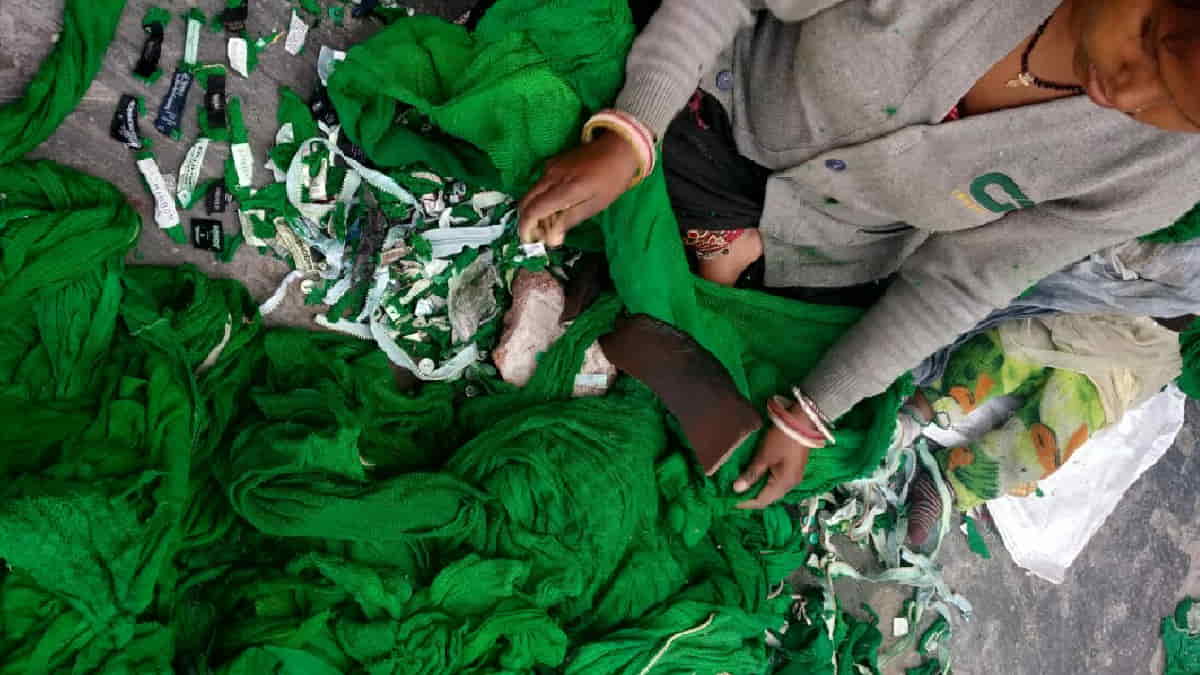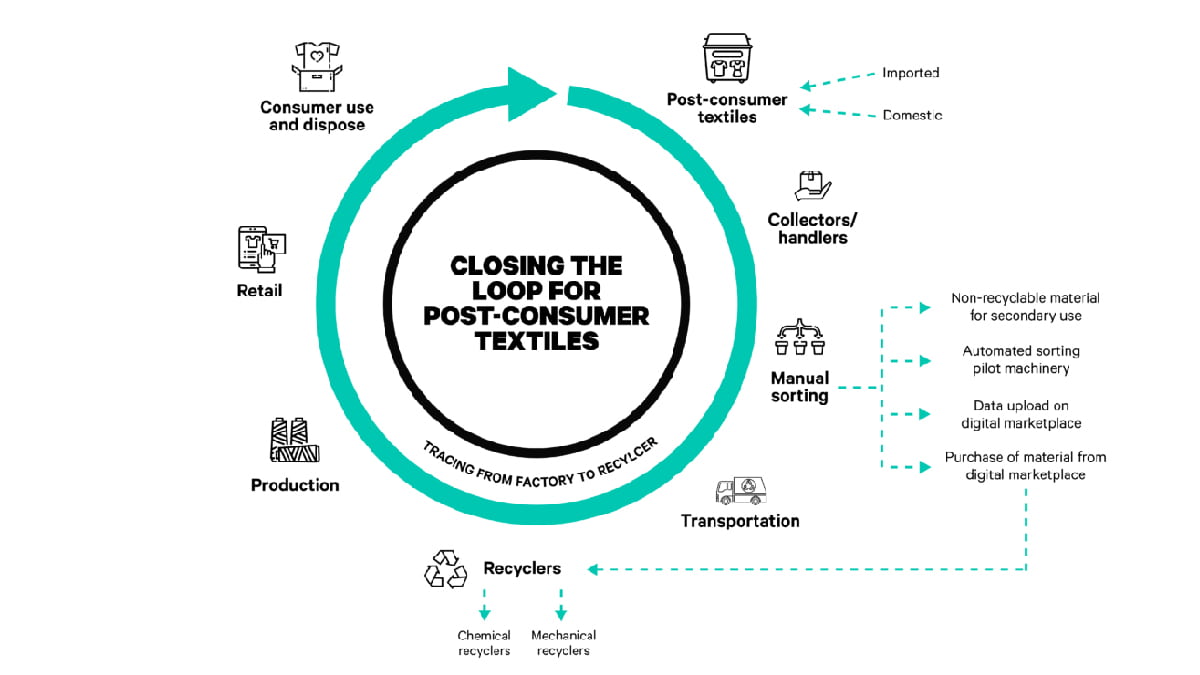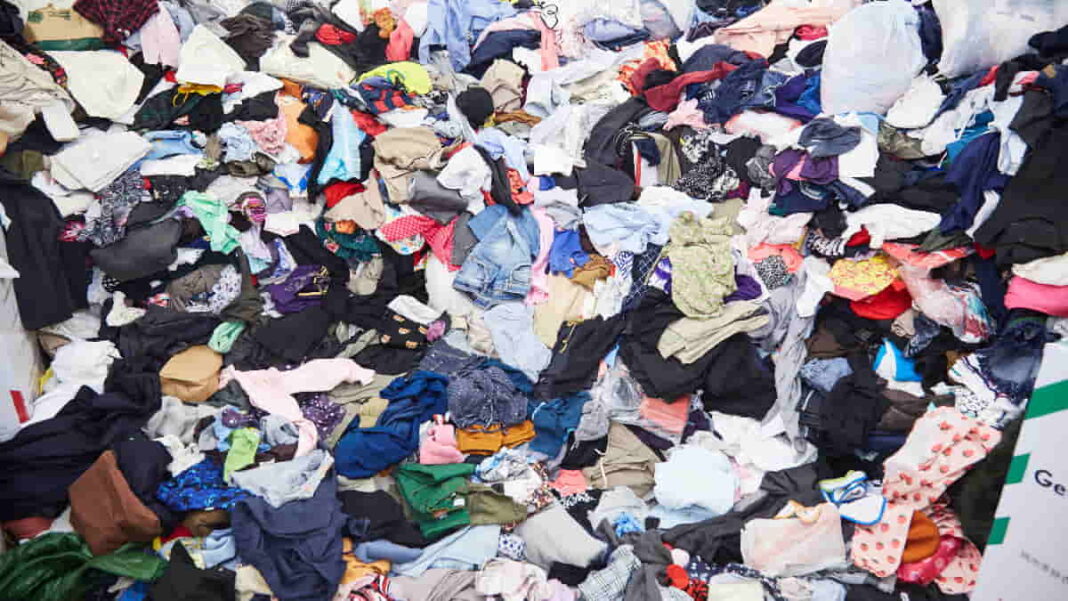Fashion for Good, a global initiative, invites Indian textile and garment manufacturers and supply chain stakeholders to volunteer to provide crucial information to help understand pre-consumer textile waste streams in India. Sorting for Circularity India project initiated by Fashion for Good with adidas, Levi Strauss & Co., PVH Corp., Arvind Limited, Birla Cellulose, Welspun India and key technology partner Reverse Resources, is supported by catalytic funding provided by Laudes Foundation. The project aims to understand the current textile waste landscape of the pre-consumer waste stream including volumes, compositions, types of materials, existing supply chain, its challenges as well as opportunities in India.
To accomplish this, Fashion for Good is working with local consulting and research stakeholders Sattva Consulting and Saahas Zero Waste as well as Reverse Resources, reaching people to voluntarily share information about the textile waste generated in factories/units and offer their support. This is expected to help determine the textile waste material flow in India and identify solutions required to trace, organise and recycle the waste.
Head of Materials at Laudes Foundation Anita Chester said; “Fossil-fuel based synthetic materials will continue to dominate fashion unless innovations are scaled up, there is buy-in from the market, and the supply chain infrastructure is developed. We are pleased to see Fashion for Good and Reverse Resources collaborate to drive forward the creativity and ingenuity needed to unlock the potential of circular materials within the industry”.

Millions of tons of textile waste go to India
India ranks sixth in the world in textile and apparel exports. The textile and apparel sector in the country is the second sector that creates the most employment after agriculture, providing direct employment to 45 million people and 100 million people from related sectors. The domestic apparel and textile industry in India contributes 5% to the country’s GDP, 7% of industrial output in value terms and 12% of the country’s export earnings.
India’s position as a textile manufacturing and consumption market brings with it a large waste stream. Pre-consumer waste is only partially recycled, while the rest is mostly downcycled into low-quality products. On the other hand, while tracing domestic post-consumer waste is exceptionally difficult, the data available to understand the waste, quantities, composition and other factors key to its recycling are limited.
India is also one of the largest recipients of global post-consumer textile waste, with millions of tonnes, to the value of more than €100m, of discarded textile imported and manually sorted through various hubs. In addition to the lack of accurate information, no technologies currently exist that organise, categorise and sort materials to ensure quality textile waste is accessible for recyclers, who require sorted feedstocks in large volumes. While these are not the only challenges faced by recyclers, they are significant barriers to the growth of chemical recycling technologies in India.

“India is also a critical hub as a global post-consumer textile waste destination”
Managing Director at Fashion for Good Katrin Ley stated that India is a critical hub, not only for textile production and consumption but also as a global post-consumer textile waste destination. Ley underlined that this project is pivotal to understanding the size of this considerable market and providing the incentive, tools and means for the industry to benefit from the wealth of this untapped resource.
CEO of Reverse Resources Ann Runnel pointed out that while the global fashion industry is on a firm path towards 100% circularity, there are amazing business opportunities and low-hanging fruits for manufacturers starting the journey. Runnel said; “One of such is using digital tools to make textile waste flows visible in real-time, and act smartly to close the loop of these flows transparently, as we have already seen from our work in Bangladesh. We are delighted to now roll up our sleeves in India to show how powerful well-planned collaboration and common goal-setting can be with the help of digitalisation”.
